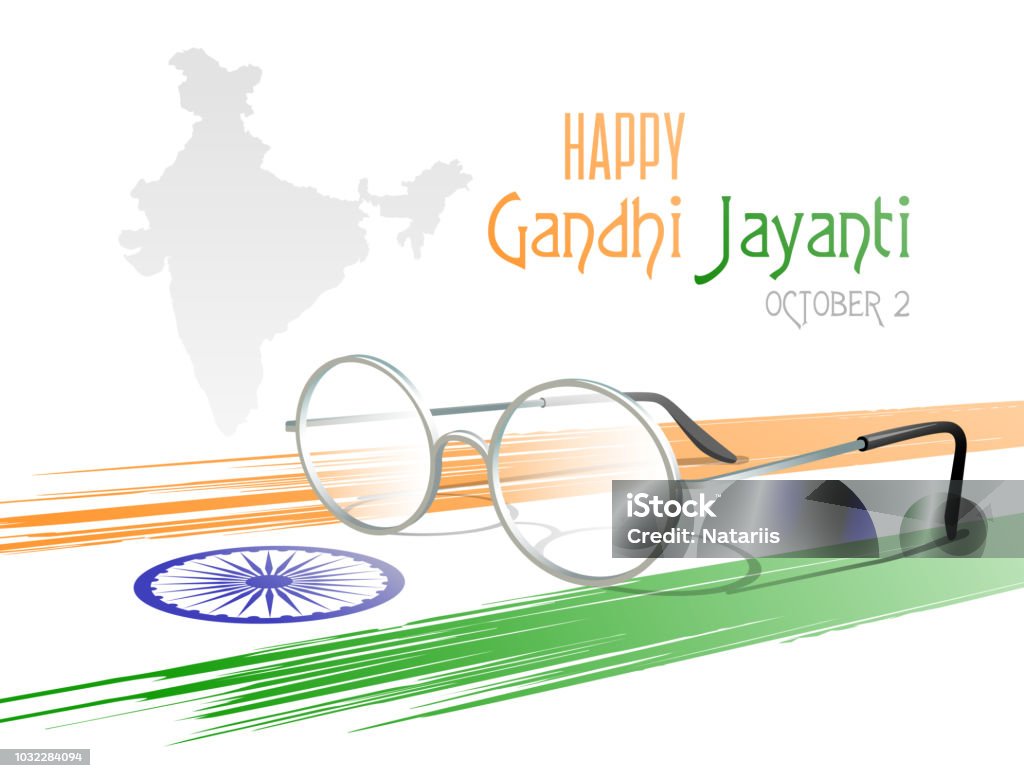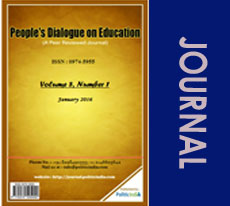LEARNING THROUGH SOCIAL MOVEMENTS
- Post By PoliticIndia.com on
- 2013-11-14 08:55:16
Naresh Prasad Bhokta & Munesh Kumar
There is an intricate relationship between education and society. Education functions in a society and for a society. At the same time, the education system itself is moulded by the existing social structure. Education as an important social institution interacts with other socio-political institutions like family, kinship, religious and political organization. In this process, the education system not only preserves many of the social and cultural values but simultaneously creates new values and generates new forces in the form of ideas and institutions having capacity to bring about change in the social structure. Due to the interaction of various social forces and churning of the new ideas, society produces movements that leave indelible imprint on society and have great educative importance. It not only enlightens the contemporary age but works as a perennial source of inspiration for the coming generation. India, in its long history, witnessed at least three such socio-religious movements which played significant role in the spread of literacy and education. These are : (i) Socio-religious movement of Ancient period; (ii) Bhakti movement of Medieval period; and (iii) Socio-cultural movement of Modern period. All the three movements have greatly influenced the existing education system and enlarged the scope of learning and education. Socio-Religious Movement of Ancient India : First movement for equality of opportunity in Education India has a long history of learning and education. Its origin can be traced back to the Vedic period. The pathshalas were the real primary schools in ancient India (Sen, 1941, p. 17). The village guru was an important functionary of the village community. Either rent free land was assigned to him or he was given some grains out of the village harvest. Usually village gurus were Brahmanas who had to perform two-fold duties-firstly, to offer worship to the village deity, and secondly, to impart instruction to the children of the three dwija or higher varnas of the village. The character of these pathshalas changed considerably during the Buddhist period. The Indian Education Commission, Bengal Report (1883) rightly points out : "It is to the Buddhist time, in all probability that we must trace the beginning of that change under which the village school master is not found to be invariably be the village priest and Brahmin, as he certainly was in early Hindu times. Thus was taken an important step in secularizing the elementary schools of the country a step which was not retraced (as such steps never are retraced) when Buddhism after living side by side with Hinduism for some centuries, finally gave place to its rivals". Buddha said that truth was something to which any one of the 'Das Indriyas' can bear witness. The Brahmanic doctrine of truth was that it was something which was declared by Vedas. Buddha was the first person to preach the message of liberty, equality and fraternity in the history of the world. Actually Buddhism opposed inequality, authority and division of society into various classes which Brahmanism introduced in India. Equality is the main feature of Buddhism. The religion of Buddha gives freedom of thought and freedom of self-development to all. Buddhism has a rational and scientific approach to religion. The teachings are the rejection of superstition and the rationality of insights. He was against the Varna or caste system. He said in no uncertain terms, "O, Bhikhus, you have come from different countries and castes. Rivers flow separately when they flow in their provinces, but they lose their identity when they meet the sea. They become one and the same. The Buddhist Sangh is like an ocean. In this Sangh all are equal" (Quoted in Ambedkar, 2003, p. 540). Therefore, the caste system did not influence the education imparted in the Buddhist centres of learning. This was, but natural, for Buddha was against the system and argued that the worth of man should be determined by his actual merit, and not by his descent or family status. Persons were admitted to the order irrespective of their castes; Upali, one of the favourite disciples of Buddha, was a barber before he joined the order. (Altekar, 1992, p. 48) Mahatma Buddha allowed the women folk to join Samgha. It gave an impetus to the spread of education among the hitherto neglected women. Some ladies acquired great scholarship and some of them even went to other countries like Sri Lanka to preach dhamma. Among the Authoresses of Therigatha 32 were unmarried women and 18 married ones. When a so large of number of girls became great teachers and interpreters of scriptures it is quite natural that the general average of education and intelligence among them must have been fairly high. (Altekar, 1992, pp. 47- 48) Bhakti Movement of Medieval Period Like Buddhism Bhakti movement of medieval period was preaching human equality. It was adverse to caste system. The Bhakti saints did not rely on any book of revelation and they were against violence. Both were spiritual religions with simple doctrine. Bhakti movement of the sixteenth and seventeenth century was another important factor which accelerated the process of democratization and/ or secularization of Indian education system. The Bhakti saints like Vidyapati, Chaitanya, Kabir, Tulsi etc. wrote and preached in the languages of the common people (Thapar, 1966, p.308). These languages thus rose to literary status by the Bhakti saints. In this way they acquired all the important characteristics which are necessary for becoming an effective medium of popular instruction. Consequently, the elementary school discarded the Dev bhasa Sanskrit in favour of these Lok Bhasas (Majumdar, 1960, p.963). The village pathshala no longer remained the exclusive preserve of the Brahamanas and the children of the deprived sections began to join these schools in considerable number. Bhakti is not only a devotional mode of veneration, but a broad religious movement. It has great educational significance. Poet saints or saints, emerged, who preached in vernacular. They accepted women, low castes, untouchables and the Muslims in to their congregations. Their teaching was based on unqualified monism, seeking deliverance- Samadhi- in one's lifetime through the union of the individual soul with the transcendental. Many of these saints were from the low castes or untouchables themselves. One of the most famous saints was Saint Ravidas who was born in the city of Varanasi in 15th century. By profession he was shoemaker but his devotion, knowledge and purity made him the most popular saint of northern India. He was a against the caste system and preached the same principle as Buddha did. Another great saint was Kabir Das who fought against inequality, caste pride, religious bigotry and empty ritualism. Both of the saints still have a large number of followers. The Kabirpanthis emphasizes honesty, faithfulness, cleanliness and education. The Bhakti movement continued to inspire the social reforms in the eighteenth and nineteenth century as well. Still Hinduism was beset with idolatory, polytheism and superstition. But these religious beliefs and practices were being challenged by a large number of heterodox sects which covered almost all parts of India- the Satnami, Appapanthi and Shivanarayan sects in Uttar Pradesh, the Charandasis in Rajasthan and the Virabhramas in Andhra Pradesh, all of whom preached against polytheism, idolatory and caste distinctions. The Karthbajas met in congregations twice a year in which caste distinctions were renouncedi they ate together as equals and addressed one another as brother and sister. These sects were very active among downtrodden and worked as effective agency of informal education. Socio-cultural Movement of Modern Period By the end of 19th century the British established their rule over almost all parts of India. This political conquest has many socio-cultural and consequently educational implications. The close contact with western culture soon gave birth to new awakening in India. Social reformers like Raja Ram Mohan Roy, Ishwar Chandra Vidyasagar, Debendranath Tagore, Dayanand Saraswati, Gopal Hari Desmukh, Jyotiba Phule etc. fought against opperessive socio-religious traditions and launched vigorous movement to open the gates of educational institutions to all Indians without any discrimination on the basis of caste or sex. This socio-cultural reform movement was the third important step for the secularization of education. Raja Ram Mohan Roy emphasized rational and scientific approach, the principle of human dignity and social equality of all men and women. He started agitation against Sati system and polygamy. He was a great champion of modern secular scientific education. It was due to untiring effort of Ishwar Chandra Vidyasagar that widow Remarriage Act was passed in 1855. As a government school inspector, he organized thirty five girls' schools; many of which ran at his own expense. He was one of the pioneers of higher education for women. As the Secretary of Bethune school he worked hard to attract Indian girls towards higher education. Bipan Chandra (1971: 131) finds that the new movement had a pan Indian existence. In Maharashtra the Paramhansa Mandali was founded. It was primarily interested in breaking caste rules. The Gujrati and Marathi Dhyan Prasarak Mandalis tried to popularize science education and discuss social questions. They started schools for women belonging to all castes and creeds. Gopal Hari Desmukh, popularly known as Lokhitawadi tried to propagate modern secular and humanistic values. Jyotirao Phule and his wife Sabitri Bai Phule worked tirelessly for the upliftment of the women of downtrodden society. Jyotirao Phule born in Pune in Mali family fought against the upper caste domination, exploitation, hypocrisy and social injustice. He led Satyasodhak- non Brahmin movement in the late 19th century. He sincerely tried to create a 'counter-culture' to the existing Brahmnical culture. He tried to destroy the anti-humanist traditions in India and replace them by 'universal humanist traditions'. The establishment of British rule and the social reform movement in India undermined the traditional caste system. Now the gates of public educational institutions were opened for all. But, according to Chauhan (1975, p. 234) the participation of the Dalits in the education system had undergone three different stages: (i) The opening of separate schools for Dalits, (ii) The struggle for equality in joint schools, and (iii) The introduction of special incentives for education of the Scheduled Castes and Scheduled Tribes. (i) Separate Schools for Dalits : Non official agencies such as missionaries, private societies and the individual opened separate schools for Dalits. Simultaneously for the spread of education a number of sectarian, caste and religious denominational institutions were set up in the country. Chauhan (1975, p. 235) explains the struggle of a Mahar boy to get admission in a government school. This incident shows the undercurrent of movement silently spreading in the society. In 1857 in the distrct of Dharwar a lower caste Mahar boy sought admission in a government school. His parents were ready to pay fees. But he was refused admission on the ground of caste. The department feared that "It would not be right for the sake of single individual, the only Mahar who had ever yet come forward to beg for admission into a school attended only by pupils of caste Hindu, to force his association with them, at the probable risk of making the institution practically useless to the great mass of natives". The Governor General in Council supported the decision of the Bombay Government. But the Court of the Directors declared in unequivocal term that admission would not be denied on caste or creed ground. The separate schools for the lower caste students were established by the Christian missionaries and the government also. But it fostered another kind of inequality as Chief Justice Warren of USA remarked " In the field of public education the doctrine of 'separate but equal' has no place. Separate educational facilities are inherently unequal". (Tussman, 1963: 40) (ii) Struggle for Equality in Common Schools : Dalits of India are victims of centuries long, religiously sanctioned bigotry. About 300 million people fall in to the lowest echelon of the rigid caste system. Due to their low social standing, affluent parts of the society deny them basic human rights. They were unable to get education and became the victim of social stigma of 'untouchability'. Society forced them to take low-paying jobs that provide inadequate income. They were not in a position to afford decent food, clothing, shelter, medical care and education. Society denied them human rights. However, after centuries of caste-based oppression, Dalit leaders started asserting themselves in the late 19th century. Jyotirao Phule was the harbinger of this movement. Jyotirao Phule and his wife Sabitri Bai Phule worked throughout their life to educate and uplift the women folk of marginalized sections of the society. As we have already seen he fought relentlessly against the upper caste domination, exploitation, superstition and social injustice. He was the founder of Satyasodhak Samaj which was the most important movement against Brahminism in late 19th century. He was to a great extent successful in creating a 'counter-culture' to the existing Brahmnical culture. He tried to destroy the anti-humanist traditions in India and replace them by 'universal humanist traditions'. His struggle has been of great educational value for marginalized sections of the society. Phule championed the cause of primary education as a fundamental right for every child of the country. It is clear from the evidence given by him before the Indian Education Commission of 1882-83. Struggle for Inequality in Joint Schools In the 20th century under the leadership of Ambedkar the movement acquired new vigour and popularity. Ambedkar interpreted Indian history as an extended and unfinished struggle between Brahamanism and Buddhism. He wrote "The history of India before Muslim invasions is the history of moral conflict between Brahamanism and Buddhism". He says again "Inequality was the 'official doctrine' of Brahmanism; Buddhism opposed its root and branch; witnessed the very different opportunities, it offered to Shudras and to women". He declared "We want equality in Hindu religion. The chaturvarnya must be rooted out. The principle that privileges for the higher classes and poverty for the lower classes must now end." The mission of Ambedkar's movement was to fight out tyranny, injustice and false traditions and undo all privileges and release the harassed people from bondage. It was a battle for the reclamation for the human personality which has been suppressed and mutilated by the Hindu social system. His final words of advice to Dalits are 'to educate, agitate and organize, have faith in yourselves and never lose hope.' In the same breath he advises the marginalized women 'Learn to be clean; keep free from all vices. Give education to your children. Instill ambition in them. Inculcate on their minds that they are destined to be great. Remove them from all inferiority complexes.' As a result of these movements government accepted the policy of equality in educational opportunities. The Indian Education Commission (1882-83) was against any type of discrimination in government or aided schools. Now equality was demanded inside the common school. But the pace was slow. Chauhan (1975, p. 237) points out that even in 1911 'low caste children are still far from welcome in the village schools; and if admitted are made to sit in the verandah'. But gradually this kind of vulgar discrimination was mitigated though discrimination in other forms remained intact. (iii) Special Incentives of Education : The Constitution of free India abolished untouchablity and it became an offence. It guarantees equality of opportunity and status. The policy of protective discrimination and social justice was started. Thus free education, special hostel and scholarships to the students of lower caste were initiated. Certain numbers of seats are reserved in the educational institutions and government offices. Dalits are aggressively asserting their rightful place in social, political, economic and educational spheres. Dalit leaders founded many educational and social organizations for the furtherance of Dalits' interests. One of such organization is the Buddha Education Foundation formed by Udit Raj in the late 1990s. It has been conducting campaigns to educate Dalits so that they become aware of their rights enshrined in the Indian Constitution. They are running educational and awareness centers all over the country. The main objective of these centres is to impart education to Dalits. The organization has been all throughout engaged in a massive programme for providing children with basic education. They are also running centres to educate the school dropout children. Thus, due to these three major movements in Indian history the Indian education system has become to a large extent democratic. As a result thirty one million Dalit children are enrolled in elementary schools, four million at the secondary stage and over a million in colleges across the country. (Velaskar; 2008, p. 223). A large number of Dalits actively participated in these movements. It had an electrifying effect on their thinking and action. They got back the lost humanity. The new generation of Dalits, equipped with new ideas and knowledge, is confident to change the hierarchical social structure of Indian society and regain their rightful place in it.
References : l Altekar, A.S. 1992. Education in Ancient India. Varanasi : Manohar Prakashan.
Ambedkar, B.R. 2003. Writings and Speeches, Vol. 17, Part 03. Mumbai : Government of Maharashtra.
Bellwinkel- Schempp, M. 2007. 'From Bhakti to Buddhism: Ravidas and Ambedkar' in Economic and Political Weekly, June 9- 15. l Chandra, Bipan. 1971. Modren India. New Delhi : NCERT.
Chauhan, Brij Raj 1975. 'Special Problems regarding Education among the Scheduled Caste' in Gore, M.S. et.al. The Sociology of Education in India. New Delhi : NCERT.
Majumdar, R.C. 1960. The History and Culture of Indian People. Bombay : Bhartiya Vidya Bhawan. l Sen, J.M. 1941. History of Elementary Education in India, Calcutta: The Book Company Limited.
Thapar, Romila 1966. A History of India, Vol. 01. Middlesex : Penguin.
Tussman, Joseph 1963. The Supreme Court on Racial Discrimination. New York : OUP. l Valeskar, Padma 2008. 'National Commitment to Education of Dalits' in Prakash, Ved and K. Biswal (eds.). Perspectives on Education and Development. New Delhi : NUEPA
(first published in People's Dialogue on Education, Vol 1&2, May&October, 2010)






